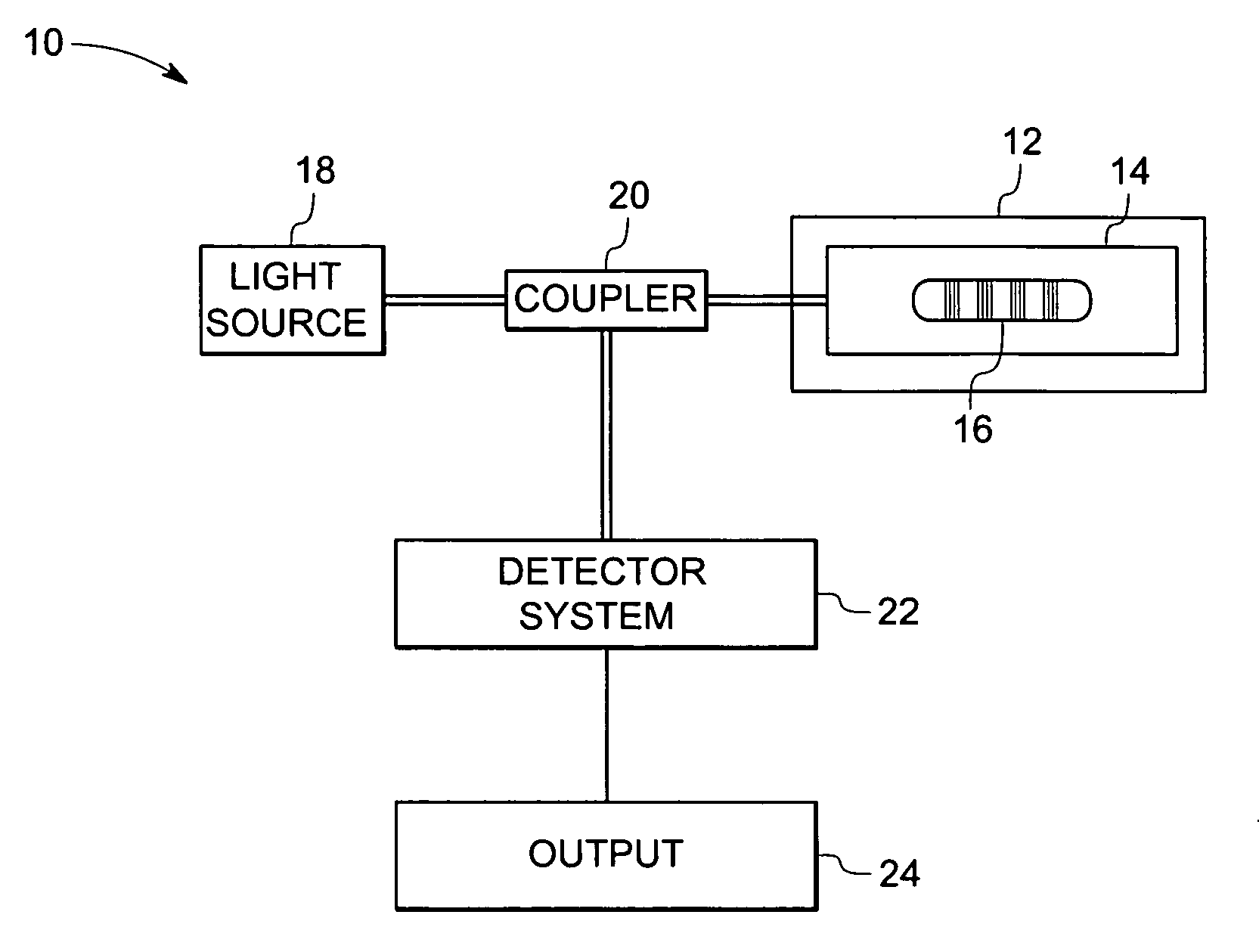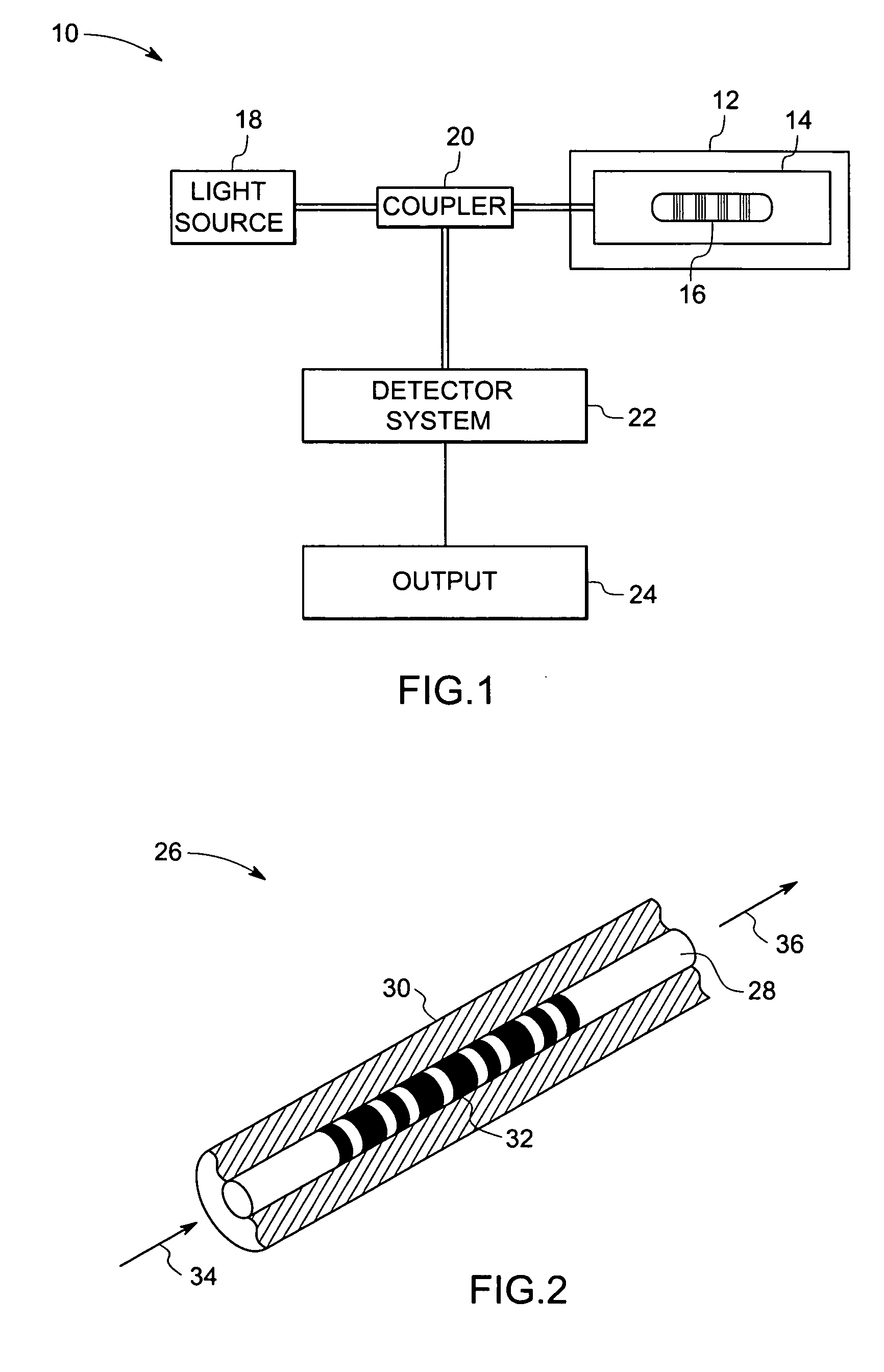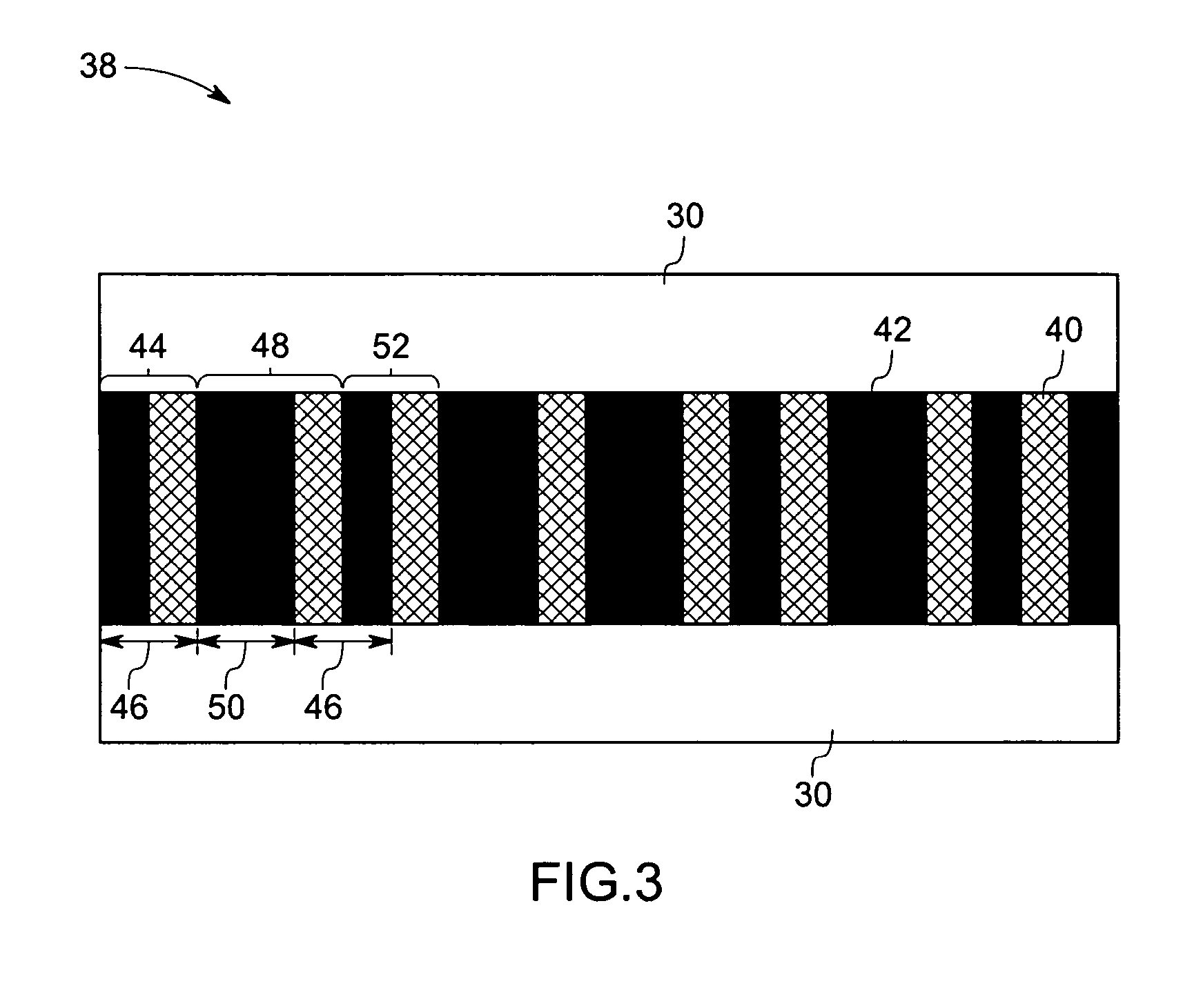Fiber optic sensing device and method of making and operating the same
a fiber optic and sensing device technology, applied in the field of fiber optic sensing devices, can solve the problems of limited operation temperature range, limited conventional sensing device, and limited temperature range of conventional sensing devices
- Summary
- Abstract
- Description
- Claims
- Application Information
AI Technical Summary
Benefits of technology
Problems solved by technology
Method used
Image
Examples
Embodiment Construction
[0024] Referring now to drawings, FIG. 1 illustrates an exemplary fiber optic sensing system 10 for detecting parameters of an environment and / or object 12. Although the present discussion focuses on sensing devices and systems, the present technique is not limited to sensing field, but is also applicable to other modalities, such as, optical filters, data transmission, and telecommunications, among others. Accordingly, the appended claims should not be limited to or by the exemplary embodiments of the following discussion. The fiber optic sensing system 10 includes a fiber optic sensing device 14 that, in turn, includes a grated cable 16. As illustrated, the cable 16 is disposed within the element 12, causing changes in the element 12 to translate to the cable 16. The grated cable 16 includes a core that has a plurality of grating elements arranged in an aperiodic pattern, which is described in detail below. In the present discussion, a grating element refers to a variance in the i...
PUM
 Login to View More
Login to View More Abstract
Description
Claims
Application Information
 Login to View More
Login to View More - R&D
- Intellectual Property
- Life Sciences
- Materials
- Tech Scout
- Unparalleled Data Quality
- Higher Quality Content
- 60% Fewer Hallucinations
Browse by: Latest US Patents, China's latest patents, Technical Efficacy Thesaurus, Application Domain, Technology Topic, Popular Technical Reports.
© 2025 PatSnap. All rights reserved.Legal|Privacy policy|Modern Slavery Act Transparency Statement|Sitemap|About US| Contact US: help@patsnap.com



